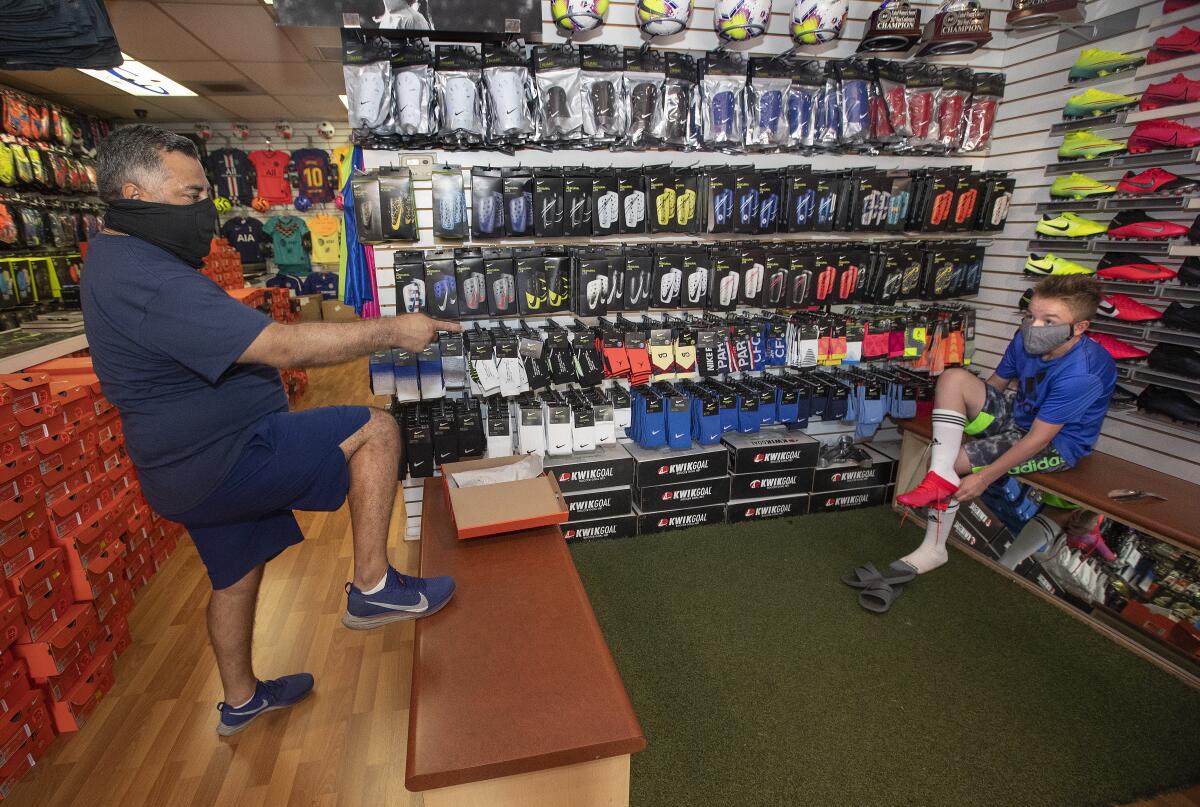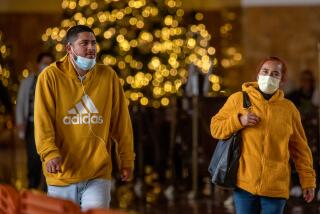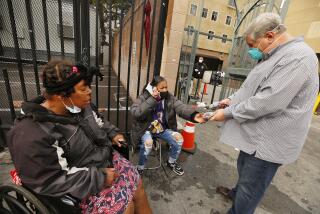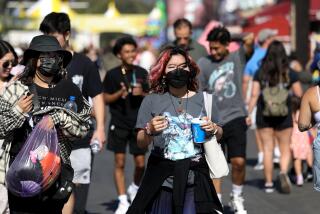L.A. County looks at whether some cities could reopen sooner than others

Even as coronavirus deaths and new cases continue to rise, Los Angeles County officials offered more insights Friday into what it would take to further reopen a local economy devastated by the pandemic.
L.A. County remains the epicenter of the novel coronavirus in the state, with more than 1,700 deaths and more than 35,000 confirmed cases. On Friday alone, officials announced 962 more cases and 47 additional deaths.
But like the rest of California, some areas of the county have seen far fewer cases and deaths than others. That’s why Los Angeles County officials are trying to determine whether it’s possible for individual cities that meet the benchmarks to move to the next stage of reopening before other parts of the county do.
Supervisor Kathryn Barger said Friday that the cities of Santa Clarita, Lancaster and Palmdale have approached the county to inquire about reopening and appear to meet Gov. Gavin Newsom’s criteria.
She said she’s asked county counsel and the Department of Public Health to provide an analysis of whether there’s anything in the governor’s order that would permit the cities to do so.
Other Southern California counties — Orange, Riverside, San Bernardino and San Diego — are working to forge a coalition to jointly lobby Newsom so they can further reopen their local economies.
Los Angeles County and some Bay Area counties have urged caution in reopening too quickly, fearing it could lead to a second wave of outbreaks and ultimately hurt the economy more in the long run.
But some rural counties that have seen comparatively little impact from the coronavirus are reopening at a much faster clip than urban counties. As the state moves into what Newsom has deemed Phase 2 of its reopening plan, it has become possible for those counties to go further in terms of reopening businesses, provided they meet certain criteria.
Nearly a third of California’s 58 counties have certified to the state that they have contained the spread of the virus, which allows them to reopen restaurants to dine-in service, as well as shopping malls and other businesses, Newsom said Thursday.
Those 19 counties are mostly in rural areas of Northern California with small populations. They represent about 4.5% of the state’s population and do not include urban centers such as Los Angeles or San Francisco.
The state is continuing talks with other counties that are trying to meet state standards for testing, hospital availability and numbers of cases.
While deaths continued to rise in Los Angeles, Barbara Ferrer, the county’s public health director, also offered some encouraging news and a better explanation of how officials will determine when to ease stay-at-home rules.
There are 1,733 COVID-19 patients in county hospitals, with about 25% in intensive care units.
“As we continue to see slight decreases in the number of people who are hospitalized over the last week and a half, we are encouraged,” Ferrer said.
She said the average number of hospitalizations is one of several metrics officials are monitoring to determine when to relax additional stay-at-home restrictions.
“There are two important questions that we need to be always answering through our recovery journey,” Ferrer said. “The first question is how capable are we of slowing the spread of COVID-19?. … And the second question we ask is how effective are we at preventing the spread of COVID-19?”
To answer the first question, the county is looking at five metrics:
- Whether there are enough intensive care beds.
- Whether there are enough ventilators.
- Whether hospitals have an adequate supply of personal protective equipment.
- Whether adequate resources are in place to investigate coronavirus cases reported to the Department of Public Health.
- Whether the county has the capacity to administer at least 15,000 tests per day.
To answer the second question, the county is monitoring average daily deaths and hospitalizations to ensure those figures have either decreased or remained stable over the last 14 days. Officials are also tracking deaths by race, ethnicity and community poverty level to make sure no one group is seeing outsized increases.
Another important component is making sure that the majority of skilled nursing facilities with coronavirus cases have been offered testing to all staff and residents in a timely manner, Ferrer said.
A total of 892 people living in institutional settings have died, the majority of them in skilled nursing facilities, she said. They represent 51% of the COVID-19 deaths reported by L.A. County.
As of Friday, more than 282,000 people in the county had been tested and received their results, with about 11% testing positive.
Coronavirus hospitalizations appear to be stable in L.A. County, and the county has an adequate number of hospital beds, intensive care units and ventilators to treat the volume of patients expected over the next four weeks, according to projections released this week by a county Department of Health Services team.
Still, researchers say it’s not yet known how the relaxation of stay-at-home rules will affect transmission of the virus.
If spread increases, healthcare facilities could see an influx in patient volume after two to four weeks, according to the county’s modeling.
Even with a marked increase, the county projects there still would be enough hospital beds and ventilators to treat the volume of patients on the high end of the models. But there’s a chance the demand for intensive care beds could surpass the number available by early June, the predictions state.
For that reason, officials say they will be keeping a close eye on the data as stay-at-home rules are relaxed, and they could reimpose restrictions if hospitalizations shoot up.
Meanwhile, Newsom on Friday appealed to a group of Native American tribes to reconsider plans to reopen their casinos in the coming days, warning that the COVID-19 pandemic poses a continuing threat to public health.
While many tribal casinos that closed in March because of the virus remain shut down at least through the end of this month, three casinos in San Diego County have notified customers that they are reopening in the next week.
Gov. Gavin Newsom appealed to a group of Native American tribes to reconsider plans to reopen their casinos in the coming days, warning that the coronavirus poses a continuing threat.
More to Read
Sign up for Essential California
The most important California stories and recommendations in your inbox every morning.
You may occasionally receive promotional content from the Los Angeles Times.














